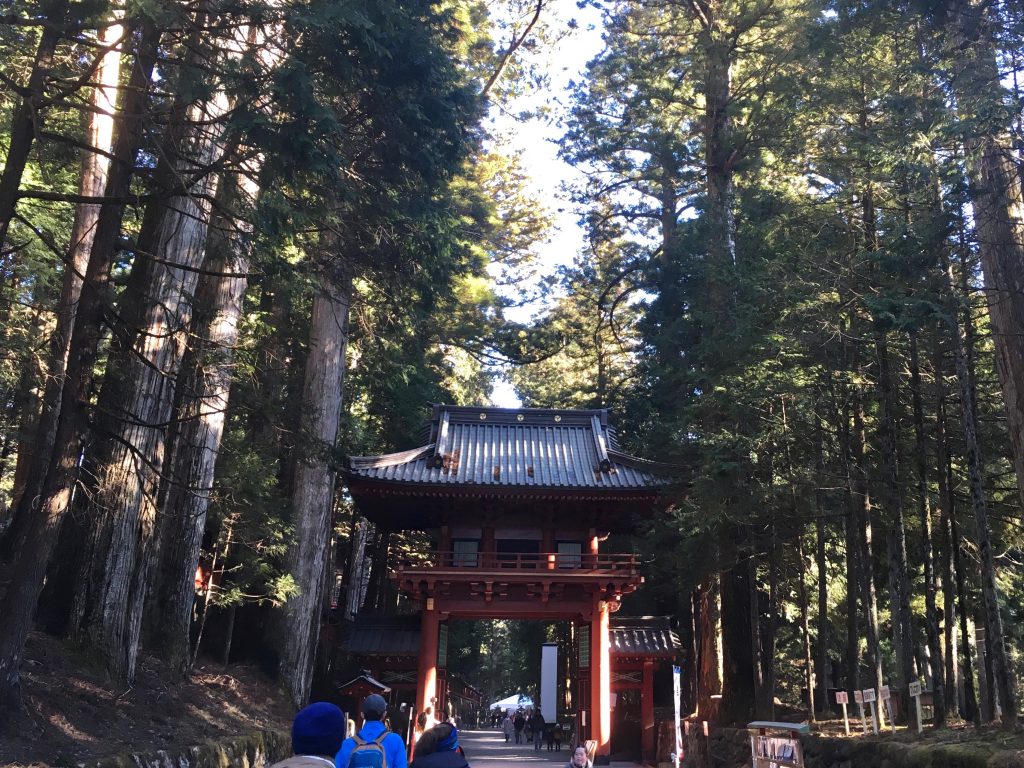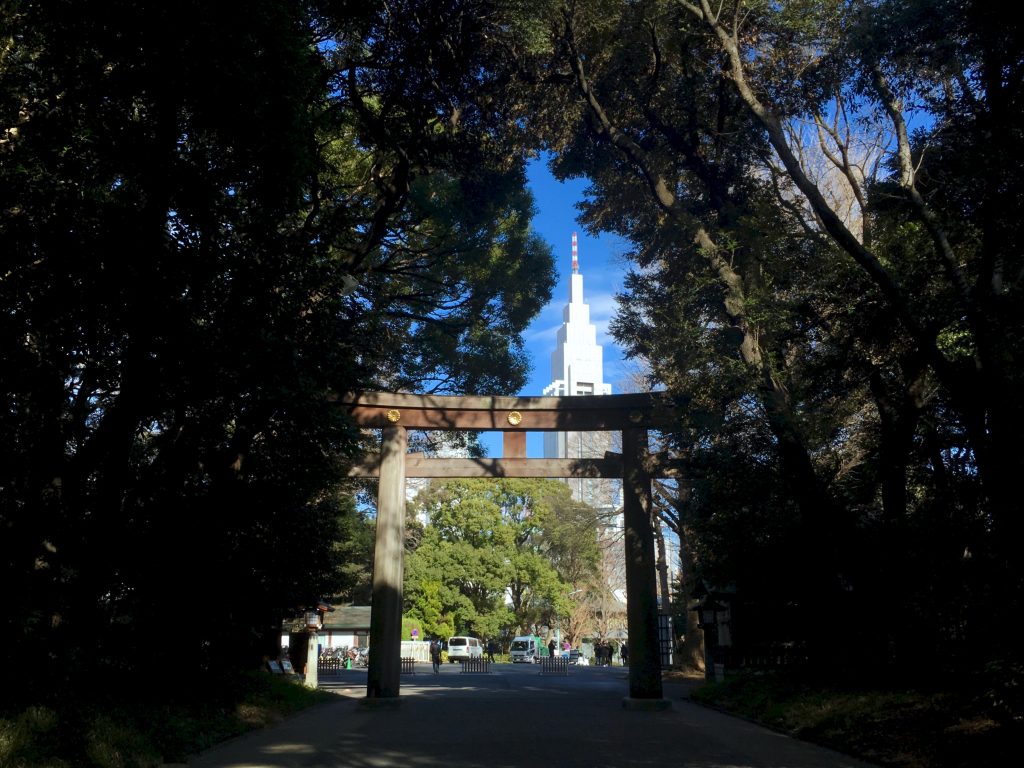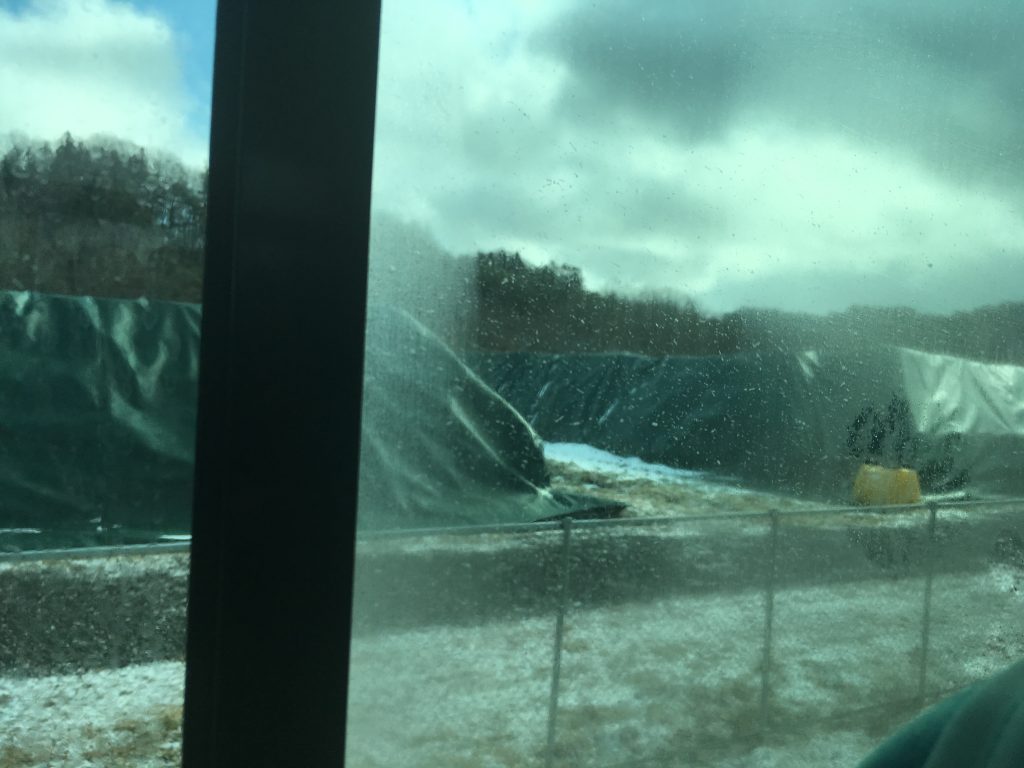Something that has been going through my head a lot over the last few weeks, especially after going through some of the photos I have taken, is the idea of what “nature” in Japan has been disturbed by humans, and what has not. At this point, I am confident in saying that the small size of the country and high density of the population makes it so that there aren’t really any places that are undisturbed from human impact. However, there are a number of places I have observed where the environment and natural landscape has existed and thrived despite the presences of pollution or being in one of the many different populated areas of the country.
The two main areas that I observed that show this undisturbed status are the Meiji Shrine area in Tokyo, and the Nikko National Park and World Heritage Site. Both of these places were mind-blowing to me from their beauty and histories. What is the most jaw-dropping, however, is the fact that these areas appear so undisturbed, despite the incredible amount of human activity surrounding the area. The Nikko National Park is situated on the opposite side of the mountain of the Ashio Copper Mine, which has completely destroyed the surrounding environment and contaminated the water systems that flow below. The National Park seems almost untouched by man, however. The trees are what say it all at Nikko. All of the buildings have been around for upwards of 1,300 years, but they have had to had renovations and maintenance in order to keep them in tact. From my understanding, the trees have been relatively untouched, and have just continued to grow and grow, for over a thousand years. This brings up the idea that Nikko is actually more natural than it probably was when the temples were first built– or at least the temples are more engulfed into the surrounding forest.

The giant trees that engulf the Nikko National Park
The other “undisturbed” area I saw was the Meiji Shrine area that lies within an incredibly beautiful forest, right next to sky scrapers of Tokyo and right by Hadajuku, which is filled with people wearing some of the nicest clothing I have ever seen in my life. A crazy contrast for sure. If I had been placed within the Meiji Shrine without having had walked through the city to get there, I would have never guessed that it lies in the middle of one of the biggest metropolitan areas in the world. The picture I have attached below from the forest area is something that I believe show this contrast very well. The forest seems completely undisturbed from the outside world, despite the fact that the city is literally everywhere around it. This shows a strong contrast between nature and human that we have seen a lot all around Japan. It is easy to see this image and get caught into thinking of the “mystical nature” in Japan that we have discussed. That is not the purpose of this image, but there clearly is a notable contrast being displayed here.

The communications tower within Tokyo sticking out through the trees within the forest surrounding the shrine. Nature forming itself around the city.
The next two places I want to talk about represent the areas that were clearly areas seriously disturbed by human impact and will be disturbed for probably hundreds of years to come. These two places are the Watarase Basin, and the farmlands of Iitate, Fukushima. These places interest me greatly because they put an visual to the many different readings we have done about the contaminated lands of Japan and the long recovery processes for the locals that live in these areas. Below is a picture of the giant tarps filled with contaminated soil in Iitate, showing the visual contamination. Interestingly, this is something that I would not suspect is filled with contaminated soil if I did not know it before hand. I probably would not have thought much of these piles if I was just passing through the town. The rice paddies and crop lands in the area, however, seemed to be almost the exact same as all the other farmlands we have seen all around Japan. They seemed clean and in great condition. Similarly to the Watarase Basin, the contamination was very hard to detect. Yes, the area was completely wiped out and looks much different than it did before the Ashio Copper Mine, but it does not look like a damaged wasteland.

The giant green tarp piles that extended that covered miles and miles of Iitate, used to contain the radioactive soil from the Fukushima disaster in 2011.
Overall, I have found it extremely interesting that these areas that I would expect to seem totally destroyed, appear relatively untouched by human impact. It is hard to say if that is just my own fantasied perception of Japan as a foreign land, or if Japan actually strives to maintain a natural feel and sensation when in areas that are considered to be separate from the human-run cities. I think a conversation could be had about this conservation of areas that feel so undisturbed and whether or not this is the same in the United States. For me, I am not sure if we would have the same feelings in “contaminated” areas in the US, but I am curious to know the thoughts of others.
Recent Comments